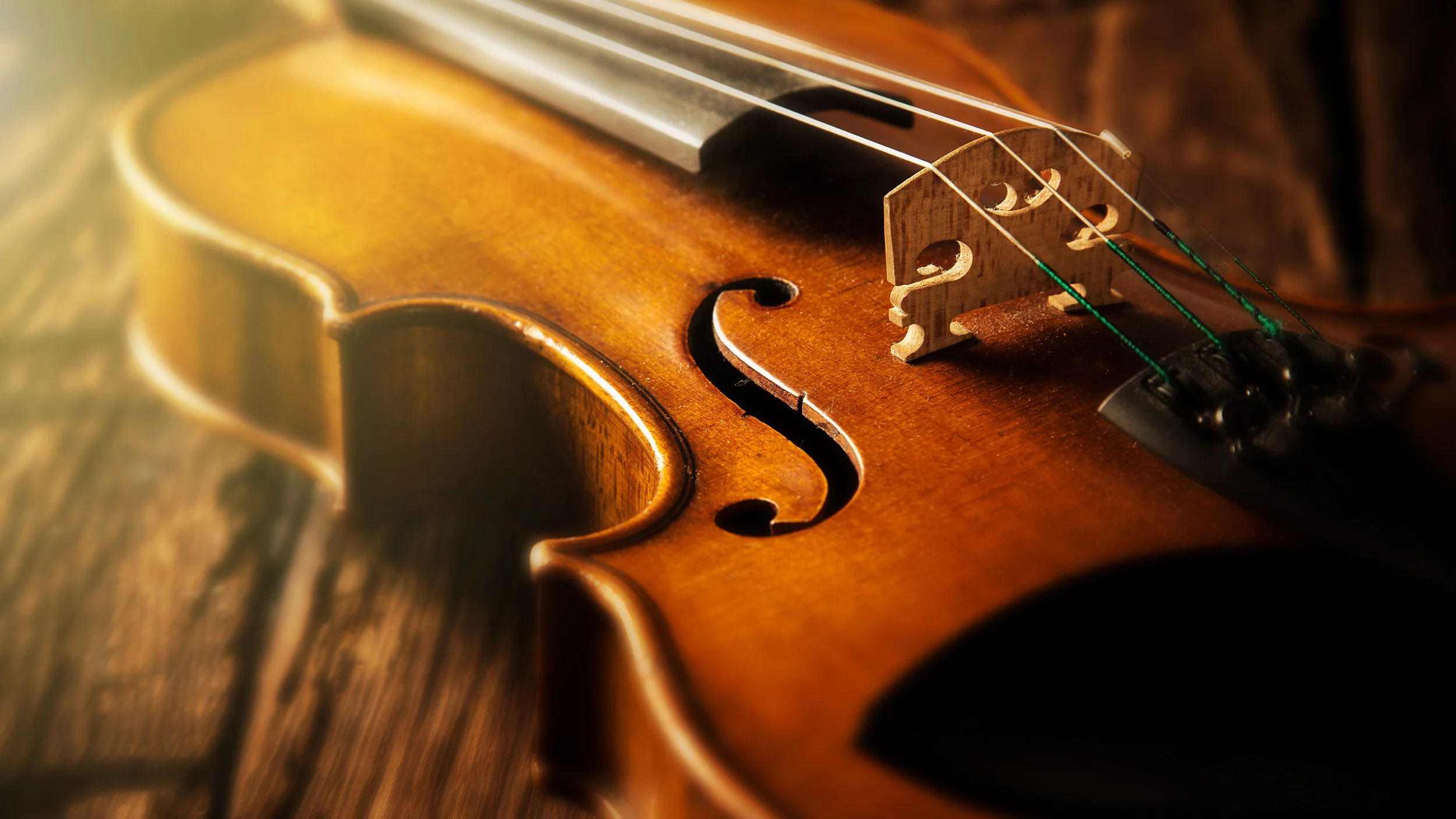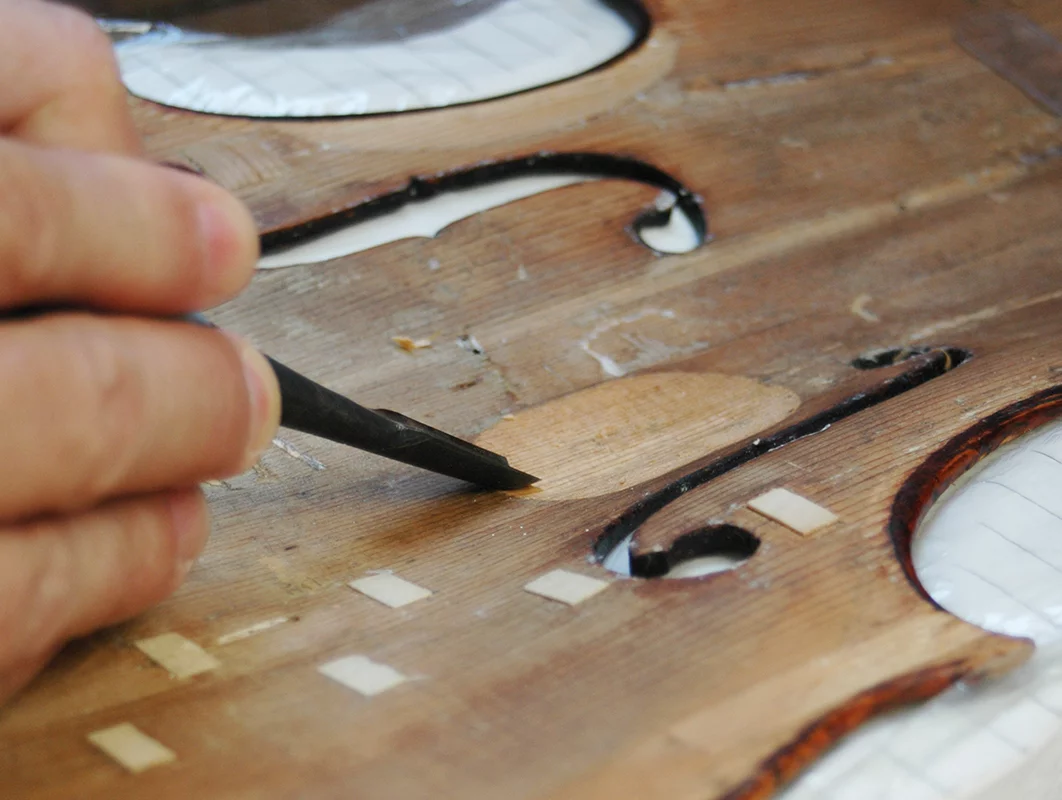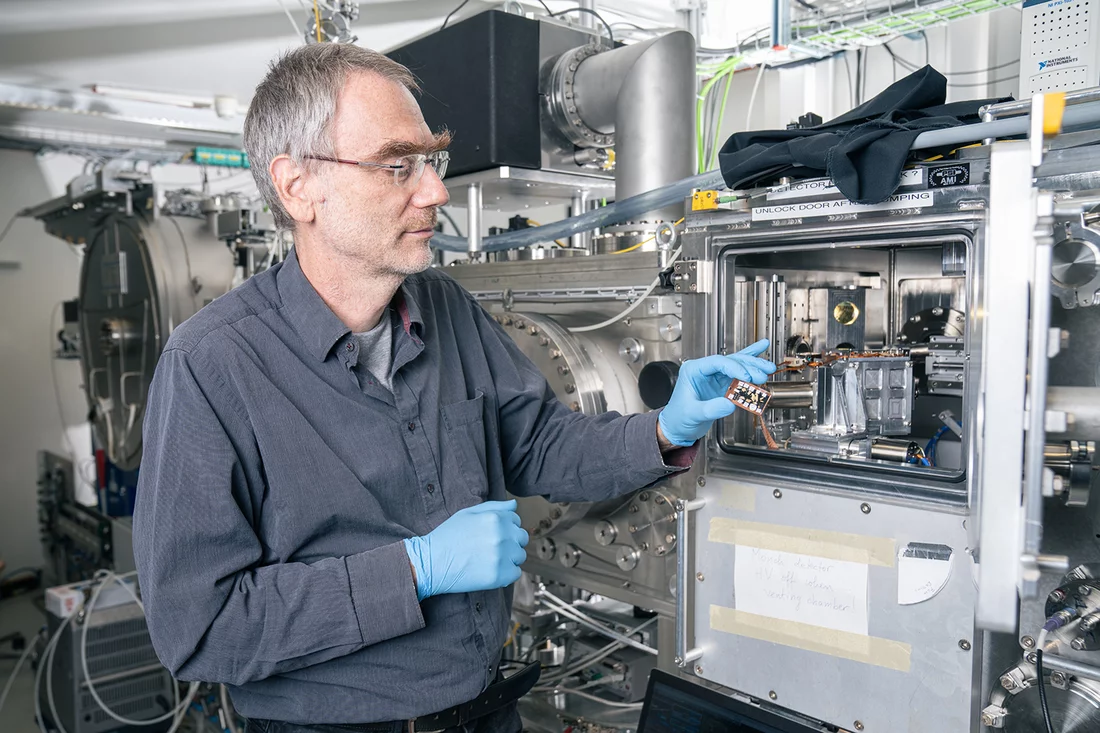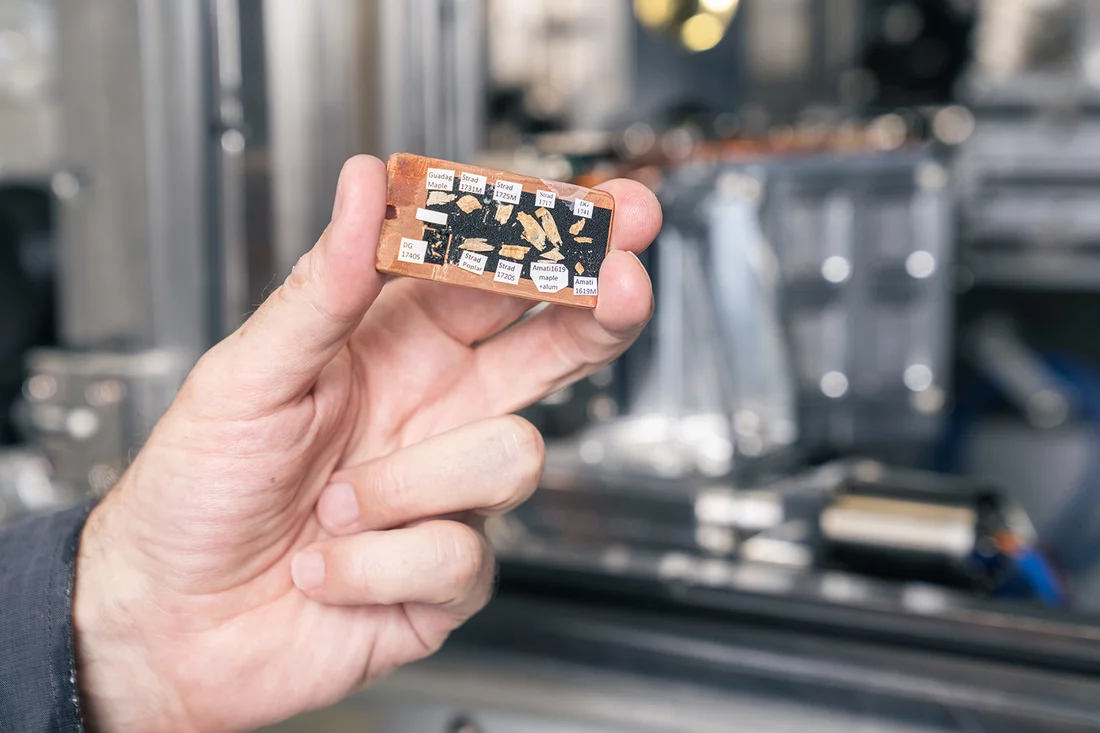The old Italian master violin makers Antonio Stradivari and Guarneri del Gesù relied on unexpected chemical additives to bring forth the extraordinary sound of their instruments. This has now been revealed by an international team of researchers with the participation of the Paul Scherrer Institute PSI. At the Swiss Light Source SLS, they examined wood shavings left over from repairs of the valuable violins. From the measurement results, the researchers conclude that the old masters extensively treated the spruce wood they used with potash, alum – a salt containing aluminium and potassium –, or other substances before proceeding with the mechanical work. The study has been published in the journal Angewandte Chemie International Edition.
Antonio Stradivari's violins from the 17th and 18th centuries are world-famous for their unique sound: Many consider him the best violin maker in history, and his stringed instruments are sometimes sold for many millions of Swiss francs. Equally respected are the violins made by Guarneri del Gesù, who, like Stradivari, was based in Cremona, Italy.
For the scientific world, it has long been a mystery how the old masters managed to create such exceptionally lively-sounding instruments. Is their secret in the type of construction? Did the luthiers of Cremona use wood of a special quality, whose composition can't be reproduced because climatic conditions have changed? Or could it actually be wood-decay fungi that ensure that even a note played very softly can be heard in the farthest reaches of a large concert hall?
The chemistry makes the music
A study led by Hwan-Ching Tai at the National Taiwan University in Taipei now confirms a different theory: The old masters treated the violin wood with chemicals that permanently changed the structure of the wood. This was revealed by examinations of the chemical composition of the violin wood at PSI.
Because the precious original violins are not available for measurements, researchers – led by study co-author and violin maker Joseph Nagyvary, a professor emeritus at Texas A&M University in the USA – devoted painstaking efforts to collecting wood shavings and splinters left over from repairs to the instruments during the past three decades. These have now been measured on the PHOENIX beamline of the Swiss Light Source SLS and compared with samples of modern violin wood.
"We looked at the content and distribution of light elements in the wood samples using the method of X-ray spectroscopy," says PSI researcher Thomas Huthwelker from the Femtochemistry Laboratory. "Among other things, we found that in all samples from the Guarneri violins, relatively high amounts of aluminium were evenly distributed in the wood." Several samples from Stradivarius violins also contained elevated amounts of aluminium.
In the researchers' view, this even distribution suggests that the wood was treated. It is plausible, for example, that the material was placed in highly concentrated aluminium-containing solutions. One possibility is alum, which is potassium aluminium sulfate. The aluminium atoms link the individual wood fiber molecules with one another – thus stabilising the wood from the inside out. "Of course we can't know what exactly happened back then," says Huthwelker. "But such treatment would be a good explanation. It all fits together."
Masters of manipulation
Besides X-ray spectroscopy, the researchers also used other analytical methods to get to the bottom of the secrets of the Cremona violins. According to the study, the wood exhibited an "unnatural elementary composition" in all of the measurements.
In the samples from the Stradivarius violins, high amounts of sodium, chlorine, and potassium were found, which could indicate treatment with potash or common table salt. Potash partially breaks the polymer molecules of wood, leading to a lasting structural change. Table salt can prevent the wood from drying out. The researchers also found calcium in the Guarneri violin samples, which could be evidence of treatment with lime. Just like potash, it can help to remove resin residues, sugar, oils, and other undesirable impurities from the wood.
"Our data suggest that the old masters carried out materials engineering experiments to create resonating bodies with unique properties," the researchers write. The old masters of violin building evidently didn't think much of untreated wood – in contrast to many modern violin makers.
Text: Paul Scherrer Institute/Brigitte Osterath
Contact
Dr. Thomas Huthwelker
Laboratory for Femtochemistry
Paul Scherrer Institute, Forschungsstrasse 111, 5232 Villigen PSI, Switzerland
Telephone: +41 56 310 53 14, e-mail: thomas.huthwelker@psi.ch [German, English]
Prof. Dr. Hwan-Ching (Bruce) Tai
Department of Chemistry
National Taiwan University, 1 Roosevelt Rd. Sec. 4, Taipei, Taiwan 106
Telephone: +886 917134116, e-mail: hctai@ntu.edu.tw
Original publication
Materials Engineering of Violin Soundboards by Stradivari and Guarneri
C.-K. Su, S.-Y. Chen, J.-H. Chung, G.-C. Li, B. Brandmair, T. Huthwelker, J.L. Fulton, C.N. Borca, S.-J. Huang, J. Nagyvary, H.-H. Tseng, C.-H. Chang, D.-T. Chung, R. Vescovi, Y.-S. Tsai, W. Cai, B.-J. Lu, J.-W. Xu, C.-S. Hsu, J.-J. Wu, H.-Z. Li, Y.-K. Jheng, S.-F. Lo, H. Ming Chen, Y.-T. Hsieh, P.-W. Chung, C.-S. Chen, Y.-C. Sun, J. C. C. Chan, H.-C. Tai
Angewandte Chemie International Edition, 01 June 2021 (online)
DOI: 10.1002/anie.202105252
Copyright
PSI provides image and/or video material free of charge for media coverage of the content of the above text. Use of this material for other purposes is not permitted. This also includes the transfer of the image and video material into databases as well as sale by third parties.




